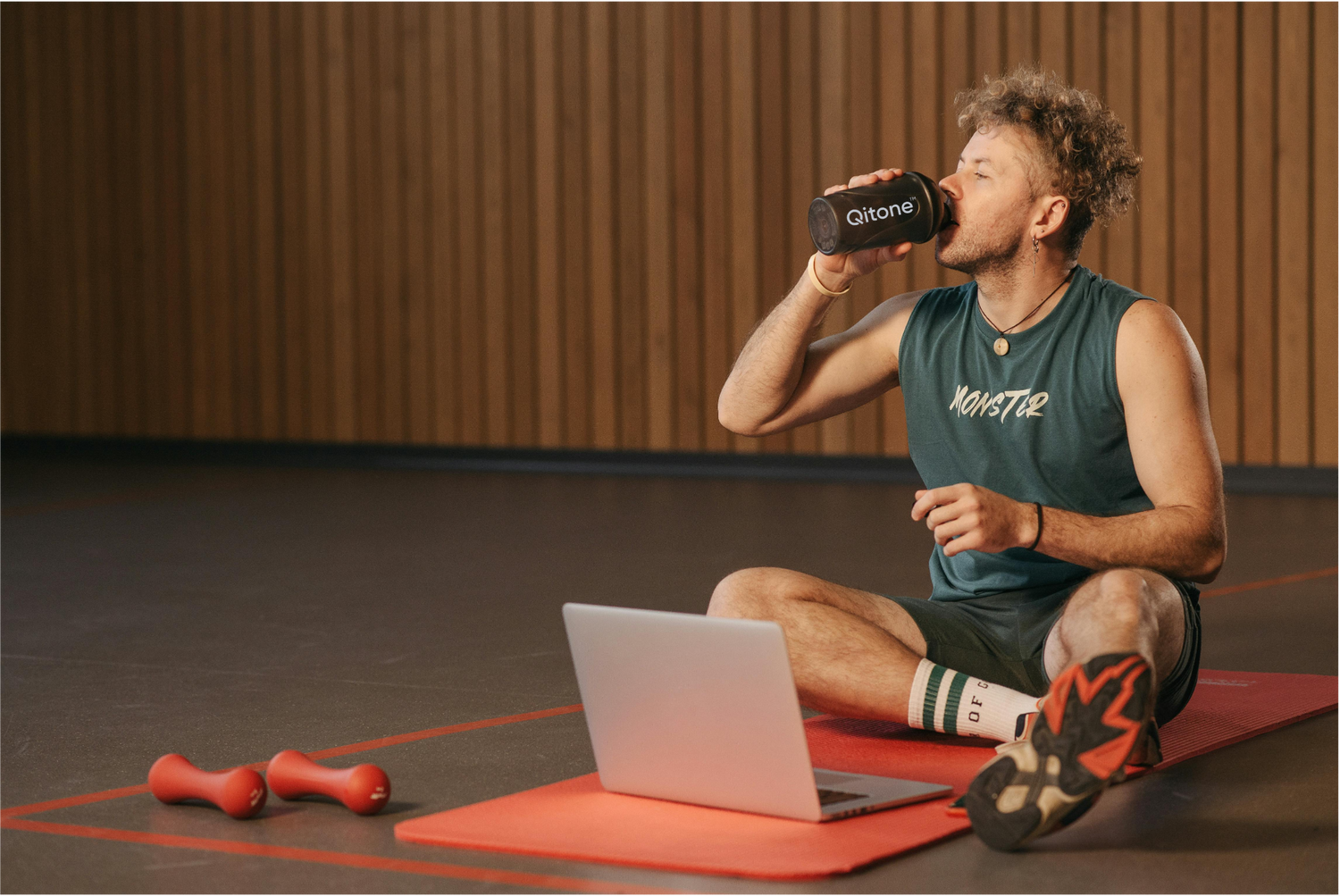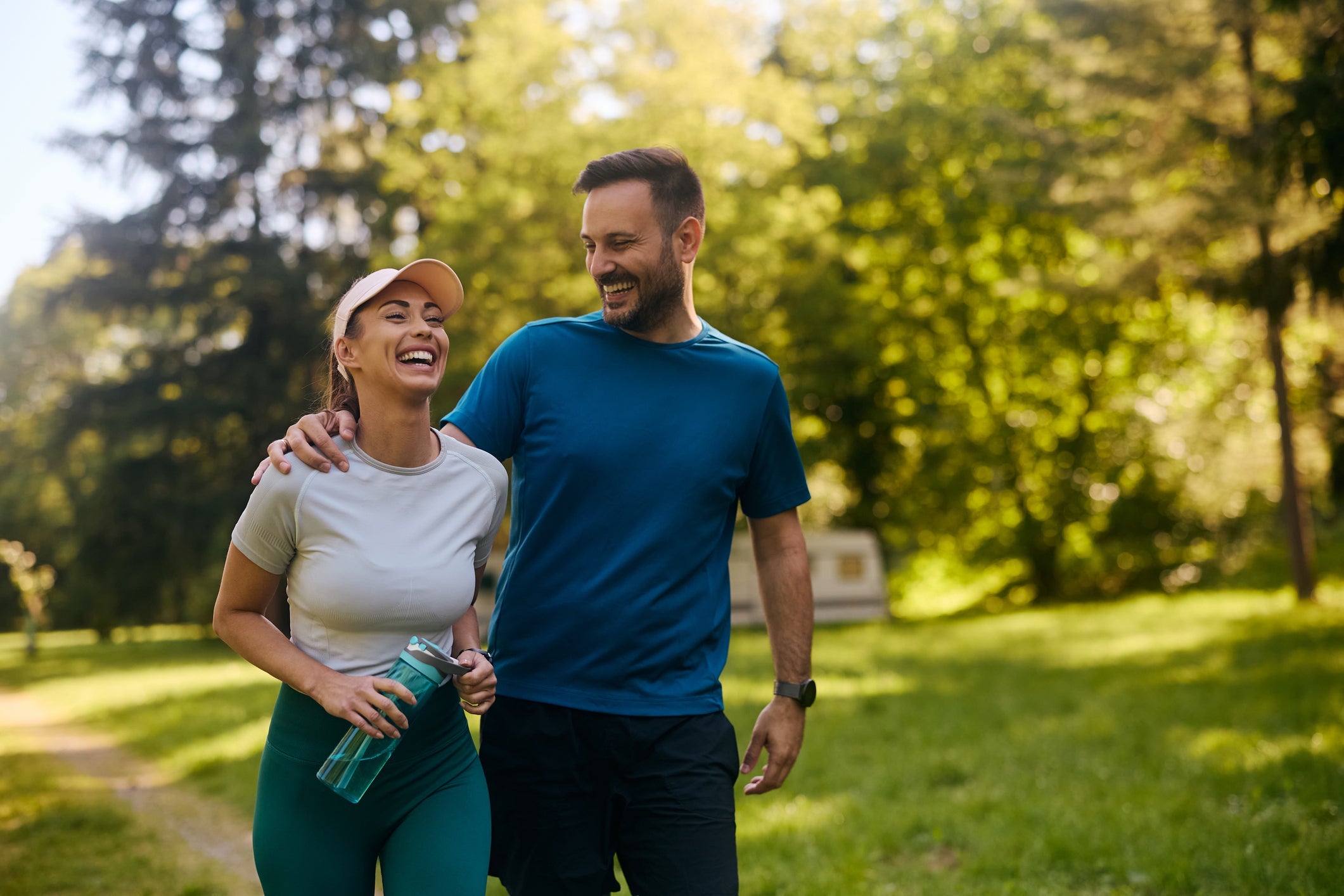How to Start a Fitness Journey with this trifecta
Regular physical activity can help you live not only a longer but a better life.
When continuing or starting a fitness habit, be sure you include a complete program of strength, cardio (endurance training), and neuromotor activities (balance and flexibility training). We need at least 2.5 to 5 hours of moderate intensity physical exercise each week (or 1.25 to 2.5 hours of vigorous-intensity activity). Consult with your physician before starting your fitness journey or changing your routine.
The Fitness Trifecta: Strength, Cardio, and Neuromotor Training
1. Strength Training
Think squats, lunges, push-ups, resistance bands, or lifting heavy grocery bags. Strength training activates large muscle groups, improving power and supporting metabolic and cognitive health. Research shows resistance exercise can increase neurotrophic factors that support brain health and resilience.
Tip: Focus on full-body workouts twice weekly, targeting different muscle groups: legs, hips, chest, back, shoulders, and arms.
2. Cardio (Endurance) Training
Brisk walking, cycling, swimming, or dancing keeps your heart strong and your mind sharp. Aerobic training boosts cardiovascular efficiency and improves blood flow to the brain, supporting better mental clarity and reaction time. Pair this with Qitone, and you’re delivering clean, sustained energy that fuels both body and mind.
Goal: Aim for 2.5 to 5 hours of moderate-intensity activity per week (or 1.25 to 2.5 hours of vigorous-intensity).
3. Neuromotor (Functional) Training
Often overlooked, this type of movement focuses on balance, coordination, flexibility, and body awareness. Think yoga, tai chi, or agility drills. Neuromotor training enhances proprioception - your body’s ability to sense movement - and reduces your risk of injury. It’s also shown to help regulate the nervous system and support better focus and adaptability.
Start with at least twenty minutes of balance or flexibility work two days a week.
Fitness Program: 5 Steps to Get Started
1. Measure Your Fitness Level
Before you begin, take stock of your current fitness level. Assess your flexibility, strength, cardiovascular endurance, and body measurements. This will give you a baseline and help you track progress later.
2. Design Your Fitness Program
Set clear, realistic goals and create a weekly plan that includes strength, cardio, and neuromotor training - the three pillars of the fitness trifecta. Make sure your plan is flexible and adjustable as you grow stronger.
3. Gather Your Equipment
Depending on your plan, you may need resistance bands, weights, a yoga mat, or shoes. You don’t need a full gym setup - many exercises can be done with body weight or minimal gear.
4. Get Started
Begin at a manageable pace and focus on consistency over intensity. Remember, it's okay to start small. Starting with manageable segments can be beneficial and will help you build your fitness routine gradually. This approach will reduce the risk of injury and keep you motivated.
5. Check Your Progress
Track your workouts and reassess your fitness level regularly. Celebrate milestones and adjust your plan as needed to stay challenged and engaged. The sense of accomplishment that comes with tracking your progress will keep you motivated and excited about your fitness journey.
Build Your Routine
- Spread physical activity at least three days a week and balance your routine to include the fitness trifecta (strength, cardio, and neuromotor).
- Complete strength on at least two days a week. Focus on different major muscle groups (legs, hips, chest, back, abdomen, shoulders, and arms) in each strength training session and work toward completing them all within a week. Aim for twenty minutes of neuromotor training at least twice a week.
- Schedule for success. Pick the time of day that makes the most sense to you and your schedule.
- Do what you love. Planning fitness activities you enjoy gives you something to look forward to, which can brighten your outlook and mood.
- Practice acceptance. Focus on starting small and improving step by step so you do not get discouraged. Even 5 to 10-minute segments can be beneficial.
Workout Journey: Focus on Consistency vs. Perfection
- Move more and sit less throughout the day, such as taking the stairs vs. the elevator, park in the farthest parking spot when you go shopping, walk the dog, trek to the store, or get a walking pad for your home office.
- Find a fitness friend or two. Research shows that we will stay more consistent if someone relies on us. No fit friends nearby? Check out social media platforms for exercise connections, which can help keep you consistent with your fitness plan and boost motivation.
- If you’re a morning exerciser, lay out your workout clothes to eliminate delays in getting started. If you exercise after work, pack your clothes or change into your workout wear as soon as possible to avoid distraction.
- Keep a fitness diary using an app, paper, or calendar. Visual cues can help drive confidence and motivation to keep you on track and take you to the next level.
Why Movement Matters - And Why It’s More Than Just Exercise
Regular physical activity doesn’t just help you feel stronger; it can support your energy, resilience, and mental clarity. Exercise activates key metabolic and neurological pathways that help regulate mood, improve focus, and increase stamina. With the proper fuel- like ketones that support brain and muscle energy - your fitness journey becomes a smarter, more effective experience.
Studies have shown that beta-hydroxybutyrate (BHB), a ketone produced in the body and delivered via Qitone, can be a powerful cellular fuel that enhances brain function, supports cardiovascular performance, and reduces oxidative stress. With a routine that includes the fitness trifecta, you’re giving your body precisely what it needs to move - and feel better.
FAQS
What is the 3-3-3 rule gym?
The 3-3-3 rule is a helpful way to structure a well-rounded fitness week. It suggests incorporating:
- 3 days of strength training to build muscle and support overall body function
- 3 days of cardio to boost heart health and endurance
- 3 days of mobility or neuromotor training such as yoga, stretching, or balance work to support flexibility, coordination, and injury prevention
How should a beginner get into fitness?
Start simple, stay consistent, and focus on building a foundation. Here's a practical roadmap:
- Set a clear intention: Whether it's feeling more energized, improving focus, or just moving more, knowing your “why” keeps you grounded.
- Begin with bodyweight basics: Squats, planks, walking, or light stretching are great starting points.
- Aim for short sessions: Even 10–15 minutes counts. It’s about forming the habit, not going all in right away.
Choose movement you enjoy: Dance, hike, yoga, lift - there’s no “right” way to move, only what feels good to you.







Leave a comment
This site is protected by hCaptcha and the hCaptcha Privacy Policy and Terms of Service apply.